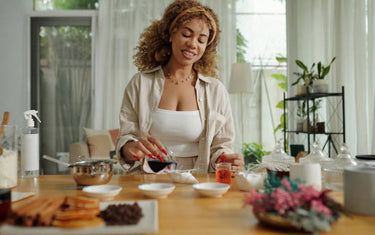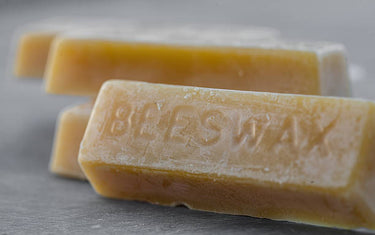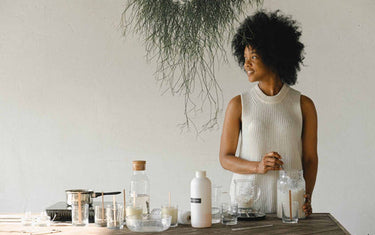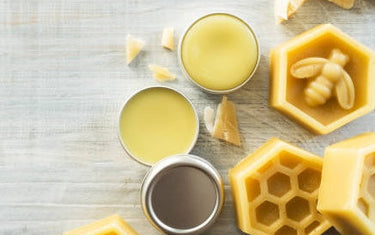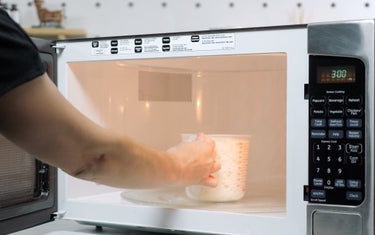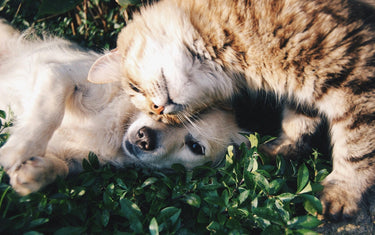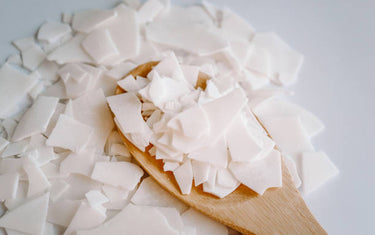5 min read / 23 June 2023 / Laura Garvin Gomez
How to Make Candles From Old Candles
Learn the art of candle recycling and create new candles from your old ones with our step-by-step guide.
Share this post

When you reach the end of a candle the natural thing is to simply replace it and dispose of the old wax.
But did you know there is a simple way to reuse candle wax to repurpose it into a brand-new candle? Learning how to make candles from old candles is easy and it works in much the same way as creating one from scratch. Our step-by-step guide explains everything you need to know, so you never have to waste a piece of wax again.
How to make candles from old candlesIf you want to reuse candle wax to make new candles there are a few materials and pieces of equipment that you’ll need to have ready before you start. Check that you have the following:
Steps on how to make a candle from old waxFollow the steps below to make new candles from your old wax:
If you have any leftover wax, let it cool and harden and place it into a container so you can reuse it for another candle. Let the wax in the candle harden for 4-5 hours and let it cure for 24 hours and it is ready to use and enjoy. |

What are some tips on how to reuse candle wax?
Take a look at some of our tips on how to make the most of your old candle wax:
- If you are using scented wax from multiple sources, think about how the various fragrances will blend in the new candle. This is not a concern if you are using unscented candles or if the wax is from a batch that uses the same fragrance. If you're using unscented wax you could use essential oils in the above recipe.
- Reusing candles that have been infused with essential oils requires you to also think about the mood and ambiance they will create once combined. For example, wax that has been infused with citrus oils may not be the right option to mix with wax infused with lavender oil, as the oils tend to produce opposing moods once released into the air.
- Similarly, if you are combining different colour candles, you should think about how the various tones will blend after melting. Colours that are close to each other tend to work well, whilst those that are the complete opposite may not create the most attractive finish.
Sometimes it can be a case of trial and error when it comes to reusing old wax, but by taking the above into account you should be able to avoid any major mistakes.

What is the best wick for making candles?
When it comes to candle making, a lot of time is spent discussing the best type of wax to use, sometimes forgetting the importance of the wick that will need to hold the flame.
Choosing the right wick for your candle will help to produce a consistently strong flame that creates a more even burn at a safe temperature. A good quality wick will generate a non-toxic, soot-free burn that will last for the full duration of the candle, so you spend much less time on maintaining its condition.
The most popular type of candle wicks tends to be:
- ECO candle wicks: Ideal for waxes with a lower melting point, these types of candle wicks feature a coreless flat braid that is interwoven with 100% organic cotton and paper fibres. They generate a clean burn with minimal mushrooming and the wick is also self-trimming.
- Hemp candle wicks: Hemp candle wicks are made from 100% organic hemp and dipped in beeswax. They are available in a spool or pre-tabbed, with the latter being the best option for beeswax candles.
- Flat FX candle wicks: The curling ability of LX wicks allows them to produce a consistent flame that minimises soot, smoke, afterglow and mushrooming. They are braided in natural cotton threads and have a flat finish with a natural soy wax coating that makes them biodegradable and a good eco-friendly option.
When choosing the best wick for your candle, you should also consider the diameter of the container, the type of wax being used, fragrance and colour load and the overall burn time.

Experienced candle makers should find it easy to reuse candle wax to make new candles, whilst first timers may be surprised how uncomplicated it all is once they get started.
It’s an eco-friendly and sustainable alternative to simply throwing away your candle wax with the weekly rubbish, and by reusing the wax, you get much more for your money.
Plus, it’s free to try, so even if it doesn’t turn out exactly how you hoped, you’ll be taking your first steps towards learning a whole new skill.



